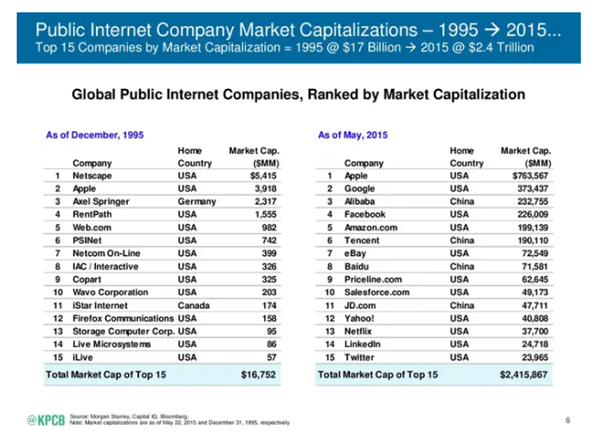0/ I used to think that crypto people are crazily optimistic, but lately a sense of despondency seems to be spreading. Even some of the early crypto diehards are sounding the industry’s death knells. This gloomy narrative is wrong and puts crypto’s long term growth at risk.
1/ There are a few factors for the pessimism: 1) after 10 years, people are still waiting for the killer app that brings the industry and technology mainstream and people are getting impatient; 2) funding for blockchain start-ups are down sharply and many projects are floundering
2/ The first issue is understandable but I would argue that we have already seen the first killer app and that is Bitcoin’s role as an alternative store of value or digital gold. Bitcoin’s phenomenal growth in value and growing acceptance by investors is a testament to this.
3/ In the past 2 years, there has been a proliferation of DeFi applications built mostly on Ethereum. These include lending platforms such as Maker and Compound, decentralized exchanges like IDEX and Paradex and derivatives platforms such as Synthetix and dydx.
4/ These platforms allow one to trade, borrow/lend, and hedge with derivatives without traditional middle-men such as banks, exchanges and brokers. Today there is about $665 M of collateral value on these platforms vs just $1.5 M two years ago. The growth has been spectacular.
5/ Seeing the success that Ethereum has had in DeFi, other layer-1 chains are also pushing aggressively into DeFi eg. EOS, and Cosmos. DeFi is starting to emerge as the next big killer application of the blockchain.
6/ As it scales, DeFi will slowly eat into the business domains of existing financial institutions. The applications above are still in their infancy but if they take off, it could redefine the global monetary and financial system. This is not as far-fetched as many people think.
7/ Some argue: but these are all for financial speculation. That’s fair but the underlying technology breakthrough of blockchain/crypto is the ability to create digital scarcity and allow a near frictionless transmission of value.
8/ If this is the main breakthrough then the first applications necessarily have to be related to the creation and transmission of money/value. Having said that, I believe we are only scratching the surface of what is possible in Web3.0.
9/ Meanwhile many blockchain start-ups continue experimenting with the use of blockchain in other non-financial applications such as gaming, social media, internet of things, logistics etc. I believe other disruptive use cases will emerge over the next few years.
10/ People need to be patient and give the innovators time. The tech is still early. In 1995, when the internet was getting started, Netscape was worth about $5 B. Amazon, Alibaba, Facebook and Google didn’t even exist yet.
11/ None of these experiments would be possible without the speculative ICO bubble in 2017, just as many of the internet innovations would not have happened had the dotcom bubble not occurred.
12/ Which brings us to the funding issue. Yes, funding for early stage ventures are down sharply but this is off an inflated 2018 base. The same happened to internet startups after the dotcom bubble. Many internet start-ups ran out of funds and shut down.
13/ After the dotcom bubble burst, everyone was very negative on start-ups and the Internet. In one of the biggest investing errors in recent history, Goldman sold its stake in a scrappy internet startup called Alibaba in 2003 as part of its internet portfolio restructuring.
14/ From 1995-2000, Goldman’s PE arm built up a $1 B global tech portfolio, investing $200 M in 25 Asian tech startups. It was the first and biggest investor in Alibaba (before Softbank), investing $3.3 M in Alibaba in 1999, for a 26.4% stake.
15/ Goldman sold its entire stake in 2003 for $22 M (7x ROI), valuing Alibaba at $83 M. Alibaba’s market cap today is $537 B. If it had held on to Alibaba, it would have generated pretty solid returns for investors even if all the other investments went to zero.
16/ We are witnessing a similar situation in the blockchain industry. Many projects are either dead or dying a slow death as fund-raising is now considerably tougher and only the best projects are getting funded. This is the law of natural selection and is a healthy development.
17/ Investors now play a critical role in identifying who will be the long term winners. Our job is to find the Amazon and Alibaba of crypto out of the wreckage, rather than write-off the whole industry.
18/ Now notwithstanding the funding challenges, I believe we are still in the early stages of blockchain technology innovation as evidenced by the scepticism towards the technology and industry, and the lack of mainstream awareness and adoption of crypto applications yet.
19/ Institutional investors are also just starting to come into the asset class and crypto assets don’t feature in most portoflios yet. At some point this will cascade, driving another speculative investment cycle to fund another wave of innovation.
20/ Throwing in the towel now is akin to selling Alibaba and other internet startups in 2000-2003. You don’t want to make that mistake.

 Read on Twitter
Read on Twitter


